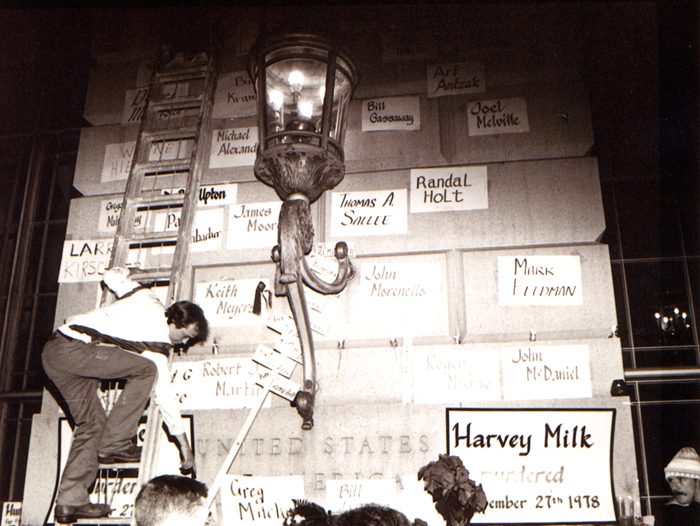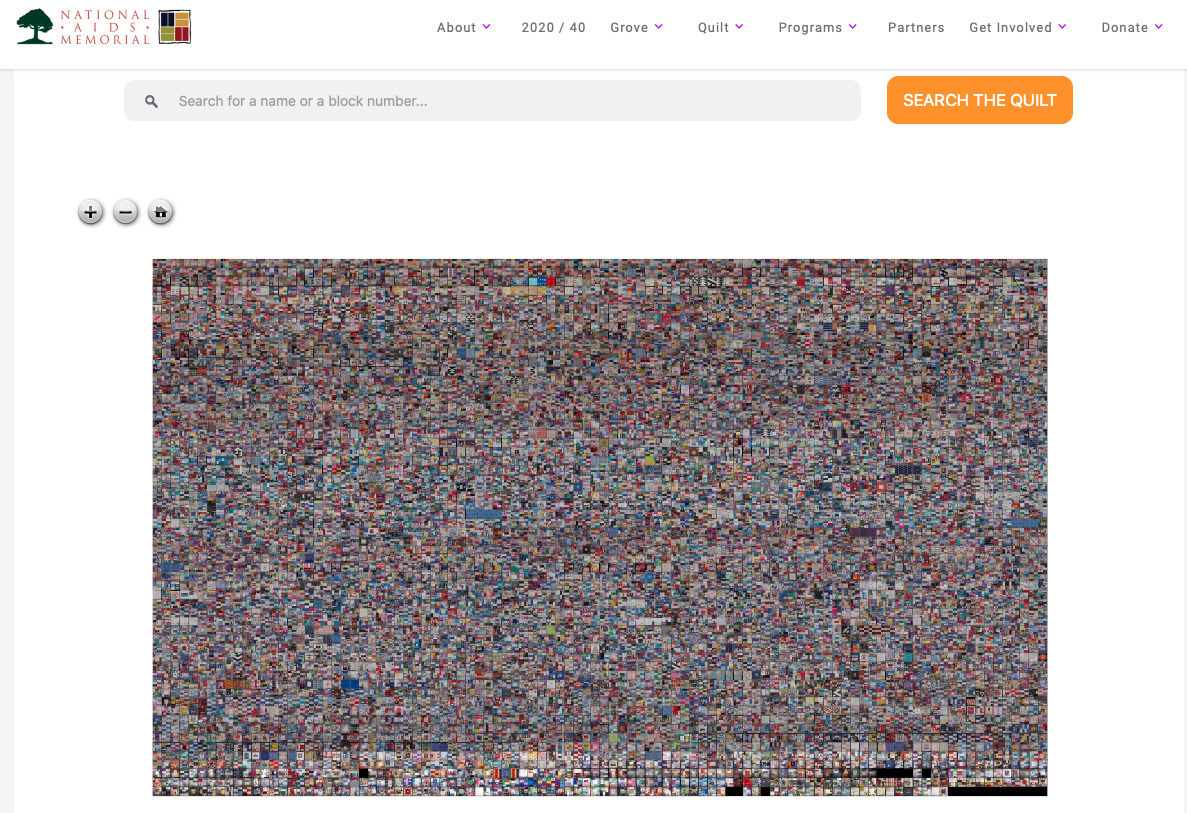
When the CDC published the article ‘Pneumocystis Pneumonia- Los Angeles’ in the Morbidity and Mortality Weekly Report (MMWR) and dermatologist Dr. Alvin Friedman-Kien reported to the CDC a group of cases of a cancer that was rare and abnormally aggressive in gay men in New York and California known as Kaposi’s Sarcoma on June 5, 1981, it signaled the beginning of a pandemic known as the acquired immune deficiency syndrome (AIDS) that almost 40 years later has claimed the lives of over 32 million people to date.
While planning the annual candlelight march to honor Harvey Milk and George Moscone in 1985, gay rights activist Cleve Jones learned that over 1,000 San Franciscans had died of AIDS. Jones explained to NPR:
“I was just so struck by that number: 1,000. … So that night of the march, I had Harvey Milk’s old bullhorn and I got stacks of poster board and stacks of markers and I asked everybody to write the name of someone they knew who had been killed by the new disease. At first, people were ashamed to do it, but finally began writing their first and last names, and we carried these placards with us with our candles to … the building that housed the Health and Human Services West Coast offices for the federal government for the Reagan administration. …”
Jones went on to explain how the placards were taped to the federal building and the inspiration that came from it. Jones said:
“And I thought to myself, ‘It looks like some kind of quilt,’ and when I said the word ‘quilt’ I thought of my great-grandma. … And it was such a warm and comforting and middle-American traditional-family-values sort of symbol, and I thought, ‘This is the symbol we should take.’”

It was at that moment that the NAMES Project AIDS Memorial Quilt was conceived. The Quilt was first displayed on the National Mall in Washington D.C. on October 11, 1987. Covering an area larger than a football field, the Quilt with 1,920 panels took six teams of eight volunteers to unfold it. The Quilt would return to Washington D.C. in October 1996, displayed in full for the last time. During this displaying of the Quilt, the Clintons and the Gores appeared, which marked the first time a sitting president of the United States visited the Quilt.
Today, 33 years later, the Quilt has 48,000 panels, and thanks to a web platform launched by the National AIDS Memorial, all 48,000 panels of the Quilt can be viewed online.
Executive Director of the National AIDS Memorial, John Cunningham said to Gay Cities:
“The National AIDS Memorial stands as a marker in the national landscape to the tragedy of HIV and AIDS and this new web platform provides an important tool in helping share the stories of the pandemic. As a person living with AIDS, I never thought I would have to live through two pandemics. While very different, there is a thread that pulls through connecting them together, rooted in stigma and discrimination. The Quilt and storytelling efforts can help us learn from the past to positively change the future.”
The interactive platform used to view the Quilt allows the user to search for a certain panel of the Quilt by typing a person’s name. This brings up the name of that person below the Quilt with a link (sometimes more than one) which goes directly to the panel of the quilt that coincides with the queried person.

The interactive Quilt is just one of many projects launched by the National AIDS Memorial. One of those is 2020/40, a storytelling initiative that features stories of “the intimate human experience of AIDS during the 40 years of the pandemic – the lives lost, the survivors, the heroes.”
Sources: CDC, amfAR, NPR, National AIDS Memorial, Gay Cities

I’m searching for directions on dimensions and how to make a panel for the quilt of a friend of mine and my sister. I’ve tried unsuccessfully to search for sewing directions.